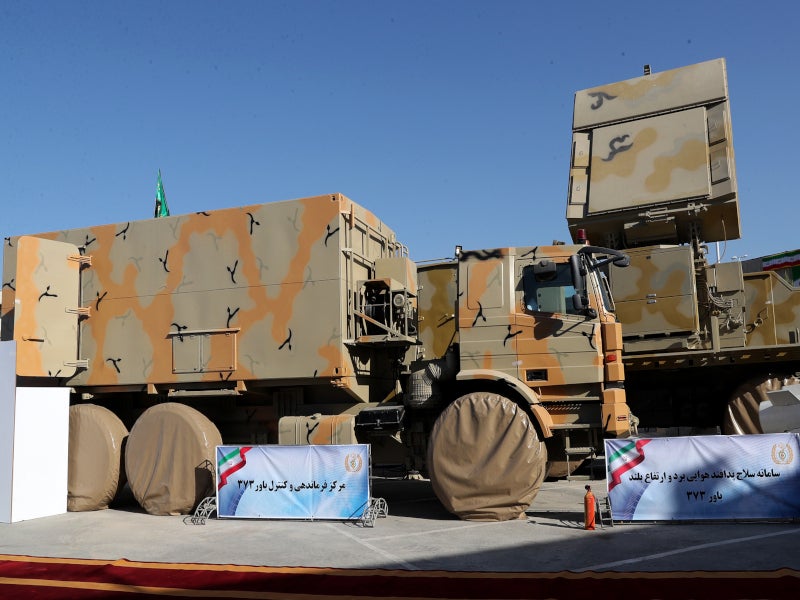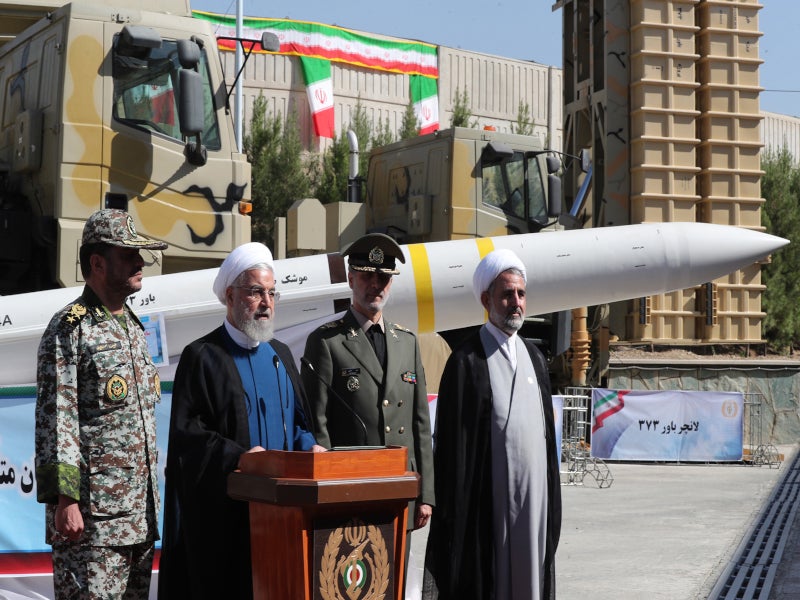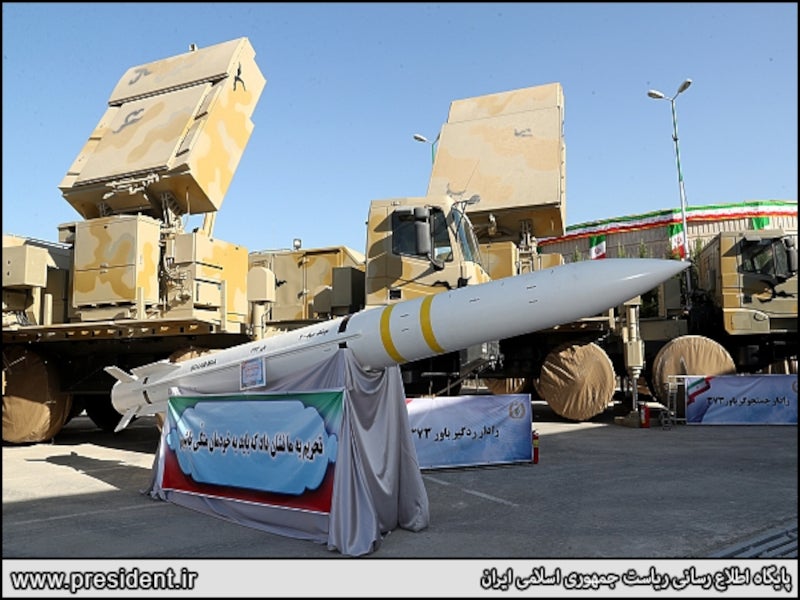Bavar-373 is an indigenous surface-to-air missile defence system developed by the Iranian Defence Ministry. It can intercept aircraft and drones as well as destroy high-speed ballistic missiles.
The air defence system was launched on the country’s National Day of Defence Industry in August 2019. It is in service with the Iranian Armed Forces. The stimulator of the Bavar-373 missile system was unveiled in September 2021.
The Bavar-373 missile system is claimed to be more advanced than its Russian counterpart S-300 long-range surface-to-air missile system. Several studies and tests conducted by the Iranian military showed that the system is superior to the American Patriot PAC-3 air defence system.
Bavar-373 was first employed in a joint air defence exercise of the Iranian Army and Islamic Revolution Guards Corps (IRGC) in October 2020. It successfully destroyed stand-off targets during the exercise, which was codenamed ‘Guardians of Velayat Sky-99’.
Design and features of Bavar-373 missile system
Bavar-373 is an impenetrable, anti-hacking surface-to-air missile defence system comprising a vertical launching system, two acquisition and engagement radars, Sayyad-4 missiles, and a command-and-control centre.
The design minimises the need for additional support equipment and systems. The vertical launching system features square launchers that are identical to the launchers utilised by naval warships for air defence.
The Bavar-373 missile system can be prepared for launch easily. It features anti-stealth capability that allows it to detect hidden targets with a very low radar cross-section.
The weapon system provides high operational speed, as well as enhanced shelf life and operator safety. The spare parts of the system can be easily replaced.
The air defence system incorporates an advanced radio detector and secure protocols between targets, missiles and radars.
Bavar-373 can be armed with three different types of missiles designed to neutralise different targets at varying altitudes. It can detect up to 100 targets, track 60, and engage six of them simultaneously.
The air defence missile system has a maximum detection range of 320km and a tracking range of 260km. It can engage targets up to 200km away and at a maximum altitude of 27km.
Radars and communication system
The two acquisition and engagement radars fitted in the missile system can withstand electronic warfare and electromagnetic bombs. The radars can also detect anti-radiation missiles (ARM) used to tackle air defence systems.
The missile system uses a mobile, long-range, phased array fire-control battle-management radar Meraj-4, which is an S-band linear active electronically scanned array (AESA) capable of tracking 200 targets.
Bavar-373 utilises Rasoul advanced communications system to encode information and transfer radar information from the battlefield to command centres.
Sayyad-4 missile
The Bavar-373 missile system uses the Sayyad-4 missile, which is the newest and longest-range variant of the Sayyad missile series. Sayyad-4 has a maximum speed of Mach 5.
The missile provides advanced manoeuvrability and can destroy the target either by a direct hit or by exploding warhead.
Each battery of the air defence system comprises up to six transporter erector launchers (TELs) with each TEL carrying four ready-to-launch missiles.
Bavar-373 vehicle platforms
Bavar-373 system’s launchers containing the missiles are carried by Zol-Jannah heavy vehicles.
Zol-Jannah, which is a ten-wheeled carrier truck, can cross up to 1.5m deep water bodies. Equipped with an independent suspension system, the truck has a maximum load capacity of 30t.
The radars and command and control equipment are mounted on the 8×8 Zafar carrier truck, which has a payload capacity of 24t.






